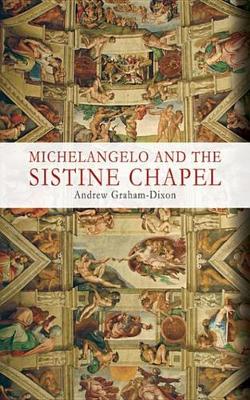Five hundred years ago the legendary Renaissance genius, Michelangelo (1475-1564), put the first brushstroke to his most ambitious creation. As he started work on his vast fresco cycle for the ceiling of the Sistine Chapel, in the autumn of 1508, he began putting into pictures the awe-inspiring legends recounted in the Book of Genesis. But for the viewer looking up into Michelangelo's painted sky, with its visions of an elemental universe, this was to be just the first of a series of unprecedentedly original images. These depictions of swooping, gesticulating, flying, muscular figures reach their climax in The Creation of Adam - a depiction of the very origins of Man that has been rightly celebrated, for centuries, as the quintessential masterpiece of the Renaissance. Yet the painting of the Sistine Chapel, for all its magnificence, came at a considerable human cost. It would take Michelangelo four years of long and bitter toil to complete his masterpiece, goaded all the while by his volatile, impatient patron, Julius II - known as the "Warrior Pope", in allusion both to his military conquests and aggressive temperament.
The two men came to blows on more than one occasion, the artist harbouring a lifelong grudge over the abuse of what his friend and biographer Giorgio Vasari called his "divine genius", not to mention the damage the labours caused to his eyes, neck and back. In his new study of Michelangelo's work in the Sistine Chapel, Andrew Graham-Dixon tells the fascinating human story behind its creation. He analyses its many layers of meaning and teases out the multitude of ambiguities that lurk within its imagery of timeless magnificence. This is a retelling of the story of the Sistine Chapel for modern times, and an essential companion guide for one of the artistic wonders of the world.
- ISBN10 1626366470
- ISBN13 9781626366473
- Publish Date 2 February 2009 (first published 3 April 2008)
- Publish Status Transferred
- Imprint Skyhorse Publishing
- Format eBook (EPUB)
- Pages 256
- Language English
